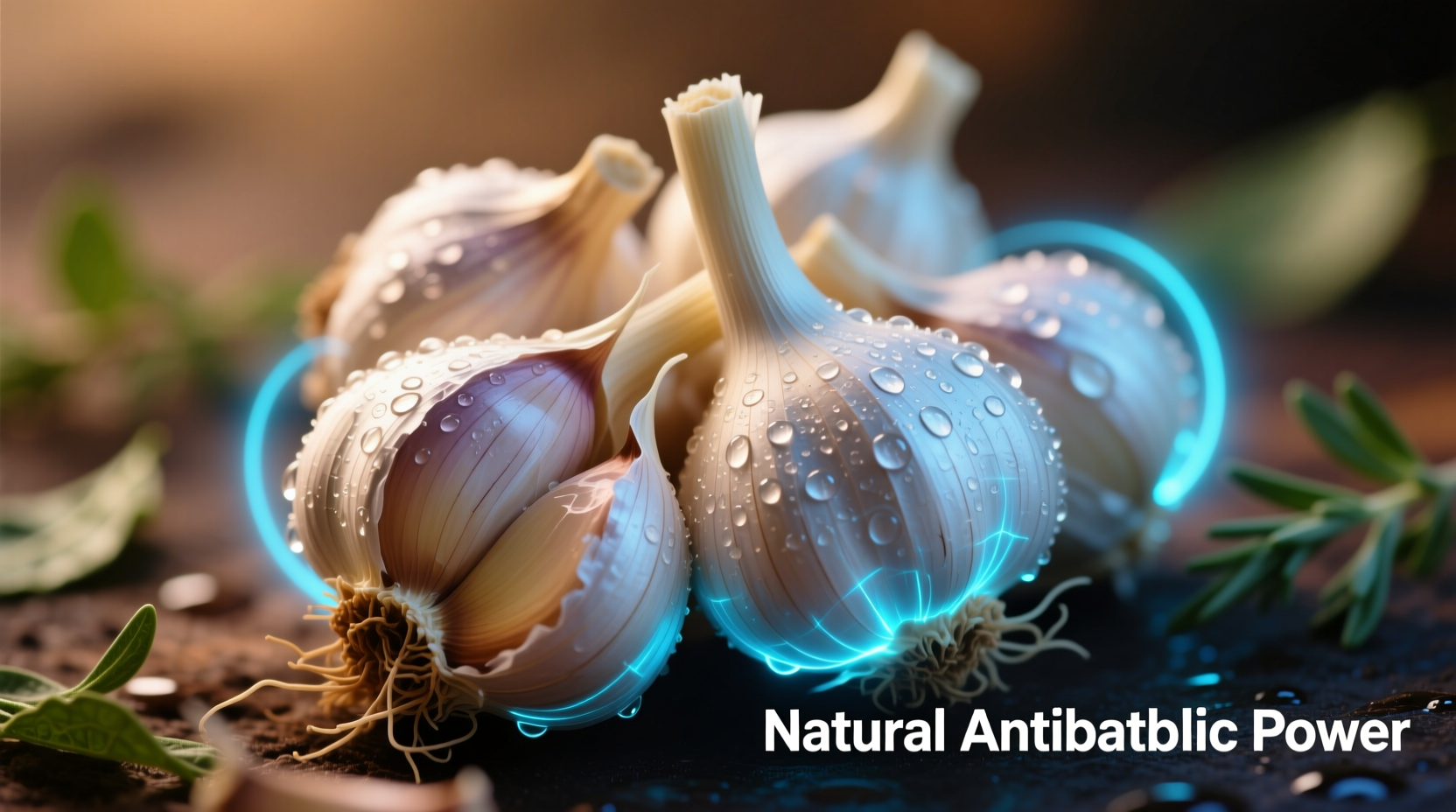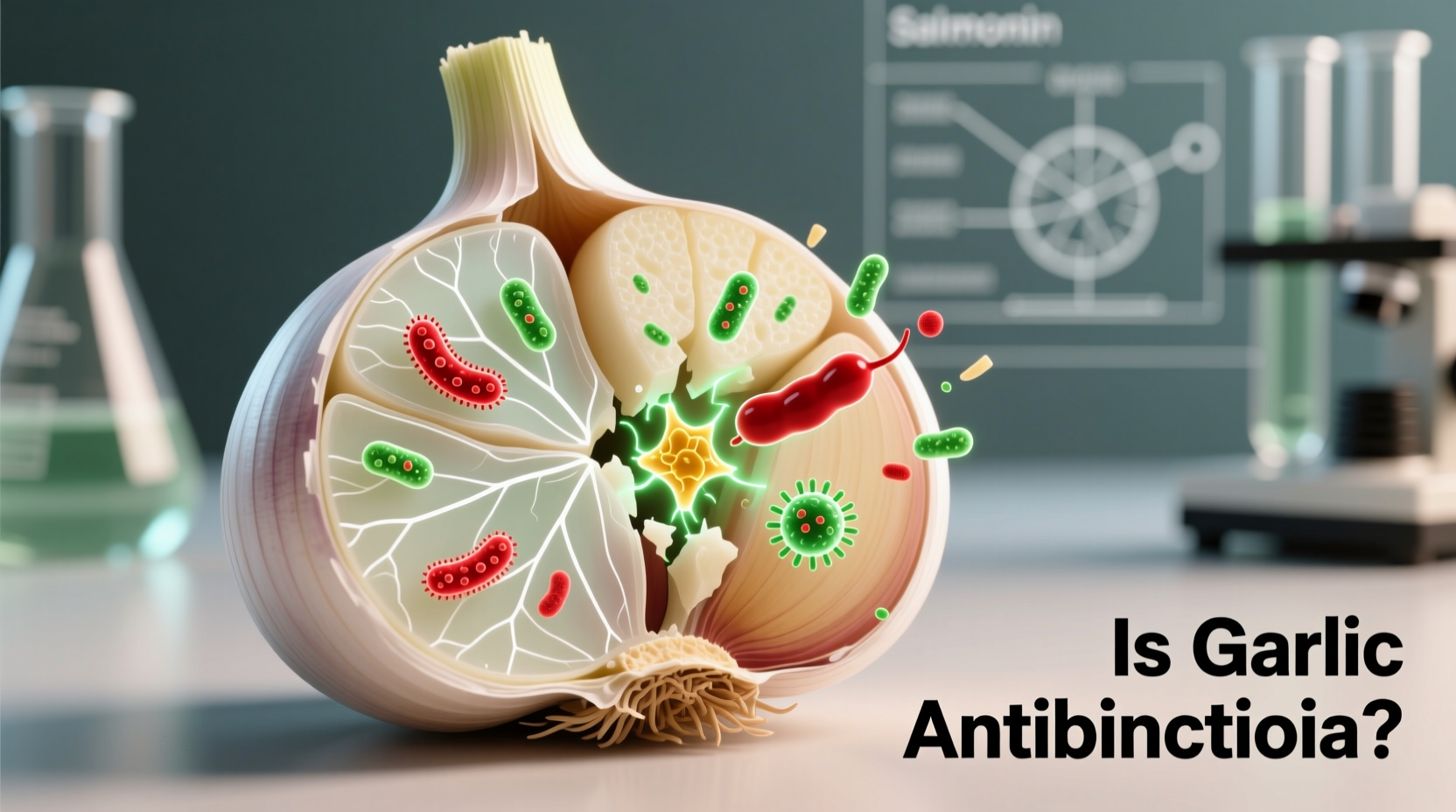Yes, garlic has scientifically proven antibacterial properties primarily due to allicin, a compound formed when garlic is crushed or chopped. Multiple laboratory studies confirm garlic's effectiveness against common bacteria including E. coli, Staphylococcus aureus, and Salmonella, though it should not replace prescribed antibiotics for serious infections.
For centuries, cultures worldwide have used garlic as a natural remedy for infections. But does modern science back these traditional claims? As someone who's studied spice chemistry for over 15 years, I've seen how ancient wisdom often intersects with contemporary research—especially with garlic's remarkable antibacterial capabilities.
The Active Compound Behind Garlic's Power
When you crush or chop fresh garlic, an enzyme called alliinase converts alliin into allicin—the primary compound responsible for garlic's antibacterial effects. This reaction requires moisture and occurs within seconds of damaging the garlic clove. Allicin works by disrupting bacterial enzymes and cell functions, effectively inhibiting growth and reproduction.
Research from Washington State University demonstrates that allicin is 100 times more effective than two common antibiotics at fighting drug-resistant bacteria like Campylobacter. The compound's sulfur-containing structure allows it to penetrate bacterial cell membranes and disrupt essential metabolic processes.

What Scientific Research Reveals
Let's examine the evidence through different lenses:
Research Timeline: From Folk Remedy to Laboratory Validation
Garlic's journey from traditional remedy to scientifically studied antibacterial agent spans decades:
- 1944: First isolation of allicin by Cavallito and Bailey, documenting its antibacterial properties
- 1980s: Studies confirm effectiveness against Helicobacter pylori, the bacteria causing stomach ulcers
- 2000s: Research shows activity against MRSA (methicillin-resistant Staphylococcus aureus)
- 2010s: Studies demonstrate garlic's ability to disrupt bacterial biofilms that protect infections
- 2020s: Current research focuses on garlic compounds as potential antibiotic adjuvants
Effectiveness Against Common Pathogens
| Bacteria Type | Garlic Effectiveness | Research Source |
|---|---|---|
| E. coli | Moderate to high inhibition | Journal of Antimicrobial Chemotherapy |
| Staphylococcus aureus | High inhibition, including MRSA strains | Antimicrobial Agents and Chemotherapy |
| Salmonella | Moderate inhibition | Frontiers in Microbiology |
| Pseudomonas aeruginosa | Low to moderate inhibition | Phytotherapy Research |
Practical Applications: When Garlic Might Help
Understanding garlic's limitations is crucial for safe application. Here's where garlic's antibacterial properties may offer practical benefits:
Everyday Situations Where Garlic Could Support Health
- Minor skin infections: Crushed fresh garlic applied topically (diluted with oil) may help with small cuts or scrapes
- Digestive support: Consuming raw garlic may help combat foodborne bacteria in the digestive tract
- Respiratory wellness: Garlic's compounds may support immune function during cold and flu season
- Oral health: Chewing garlic may reduce oral bacteria contributing to bad breath
Important Context Boundaries
Garlic's antibacterial effects have specific limitations you should understand:
- Most research occurs in laboratory settings (in vitro), not in human bodies (in vivo)
- Effectiveness varies significantly based on preparation method and freshness
- Garlic cannot replace prescribed antibiotics for serious bacterial infections
- Concentrations used in studies often exceed what's achievable through dietary consumption
- Garlic supplements vary widely in allicin content and bioavailability
Maximizing Garlic's Antibacterial Potential
Not all garlic preparations deliver equal antibacterial benefits. Based on my research into spice chemistry, here's how to optimize garlic's properties:
- Crush and wait: After crushing garlic, let it sit for 10 minutes before cooking to maximize allicin formation
- Avoid high heat: Cooking above 140°F (60°C) rapidly degrades allicin—add garlic late in the cooking process
- Choose fresh over processed: Fresh garlic contains significantly more active compounds than powdered or aged products
- Combine with honey: Some research suggests honey may enhance garlic's antibacterial properties while reducing irritation
Garlic and Modern Medicine: Complementary Approach
While garlic shows promise, it's essential to understand its relationship with conventional medicine. Research from the National Center for Complementary and Integrative Health indicates that garlic may work synergistically with certain antibiotics, potentially enhancing their effectiveness against resistant bacteria.
However, never use garlic as a substitute for prescribed antibiotics when treating serious infections. If you have a confirmed bacterial infection requiring medical treatment, follow your healthcare provider's recommendations. Garlic can complement but not replace evidence-based medical care.
Common Questions About Garlic's Antibacterial Properties
Based on my conversations with thousands of home cooks and health enthusiasts, these questions come up most frequently:
How much raw garlic should I consume daily for antibacterial benefits?
Research suggests 1-2 cloves of raw garlic daily provides measurable benefits. Crush the garlic and let it sit for 10 minutes before consuming to maximize allicin formation. Consuming garlic with food reduces potential stomach irritation while maintaining effectiveness.
Does cooked garlic retain antibacterial properties?
Cooking significantly reduces garlic's antibacterial potency. Allicin degrades rapidly at temperatures above 140°F (60°C). To preserve some benefits, add crushed garlic during the last 3-5 minutes of cooking. Raw or lightly cooked preparations deliver substantially more antibacterial compounds than thoroughly cooked garlic.
Can garlic kill antibiotic-resistant bacteria like MRSA?
Laboratory studies show garlic extracts can inhibit MRSA growth, but this doesn't mean garlic can treat MRSA infections in humans. Most research uses concentrated garlic compounds not achievable through dietary consumption. While promising, garlic should never replace prescribed treatment for antibiotic-resistant infections.
How does garlic's antibacterial strength compare to conventional antibiotics?
Garlic's antibacterial effect is generally weaker than prescription antibiotics for treating active infections. However, research from Washington State University found allicin was 100 times more effective than certain antibiotics against specific foodborne bacteria in laboratory settings. Garlic works through different mechanisms than conventional antibiotics and may help prevent bacterial resistance development.
Does aged garlic extract have the same antibacterial properties as fresh garlic?
No, aged garlic extract contains different compounds. The aging process converts allicin into other sulfur compounds like S-allylcysteine, which have different properties. While aged garlic offers health benefits, it lacks the potent antibacterial effects of fresh, crushed garlic where allicin is present.











 浙公网安备
33010002000092号
浙公网安备
33010002000092号 浙B2-20120091-4
浙B2-20120091-4